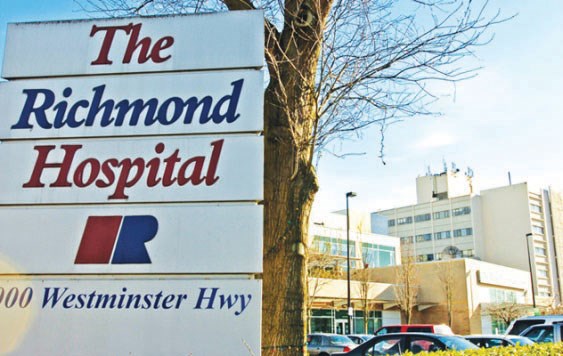While all levels of government tackle the COVID-19 pandemic, the community is waiting for a long-promised new acute care tower for Richmond Hospital to replace the aging, and outdated, one.
Despite its age, narrow hallways and shared rooms, however, Richmond’s medical health officer is confident the hospital and its facilities can handle an influx of patients.
Richmond Hospital was built in 1966 and while talk about rebuilding a large portion of it has been discussed for a couple decades, the work to realize that didn’t start until two years ago – and the actual plan has yet to be announced.
Just two weeks ago, Health Minister Adrian Dix told the Richmond News that an announcement on the acute care tower business case, with a budget and plans, would come “shortly,” but since then the coronavirus outbreak has sucked all attention away from anything but its containment.
Richmond Hospital has a total of 228 beds, which include 14 intensive care beds, 15 obstetric beds, three pediatric beds, 22 mental health and addictions beds and 174 other acute beds.
The total number of acute care beds in Vancouver Coastal Health (VCH) is 1,928 – this includes the Sea-to-Sky Corridor, the North Shore, Vancouver, Richmond as well as a few remote communities, with a total population of 1.25 million.
VCH wouldn’t specify how many ventilators are at Richmond Hospital, but the total for the whole health region is 216 – they also didn’t specify how many were designed for adults and how many for children, despite queries from the Richmond News.
Nevertheless, if Richmond Hospital were to receive a large number of acute coronavirus cases, these would have to be treated in a seismically unsafe 54-year-old building with narrow hallways and doorways with about 80 per cent of beds in shared rooms.
Richmond Coun. Kelly Greene said she’s confident staff would do an excellent job caring for patients, but she said the “fundamental flaw” is the age of the building and its outdated features like bathroom doors that wheelchairs can’t get through and the large number of shared rooms.
Staff will have to “work against the building” in an acute situation, Greene said.
“They’re going to give you excellent care but they have this whole extra layer of challenge in a building that’s grossly outdated,” she added.
While there might come a time when hospital capacity will be reached during this outbreak, Richmond’s medical health officer, Dr. Meena Dawar, said she’s not worried at the moment that Richmond Hospital’s limitations, for example, shared rooms, will mean it can’t handle patients.
COVID-19 is managed like influenza, and, because it’s transmitted by droplets, having several people in a shared room won’t cause it to spread, Dawar explained.
“What we usually do around individuals who have respiratory infection works for COVID, fortunately,” she said, adding it’s not like tuberculosis that needs airborne precautions around an individual.
“While we like to have private rooms, we do manage (respiratory) patients successfully with shared rooms,” she said.
Dawar said the Ministry of Health has done an assessment on ventilators and how many each hospital has, and she’s not worried about not having enough ventilators at Richmond Hospital, adding that both ventilators and people can be moved around.
“Care will be provided when individuals need it,” she said.
Currently, beds are being emptied by cancelling elective surgeries while hospital staff prepare for a possible influx of coronavirus cases.
But there is no short-term solution to fix an outdated building.
In 2016, the Richmond Hospital Foundation expressed its frustration during the facility’s 50th anniversary celebration, at which time Liberal MLA Teresa Wat pointed out the hospital had been upgraded to the tune of $67 million between 2002 and 2013 with an additional $27 million for items such as inpatient room renovations and heating and cooling system upgrades.
While door-knocking for during the past provincial election, Greene talked to a retired hospital worker who said there was talk about rebuilding the hospital 25 years ago.
“Everyone in health knows this building needs to be replaced,” Greene said.



